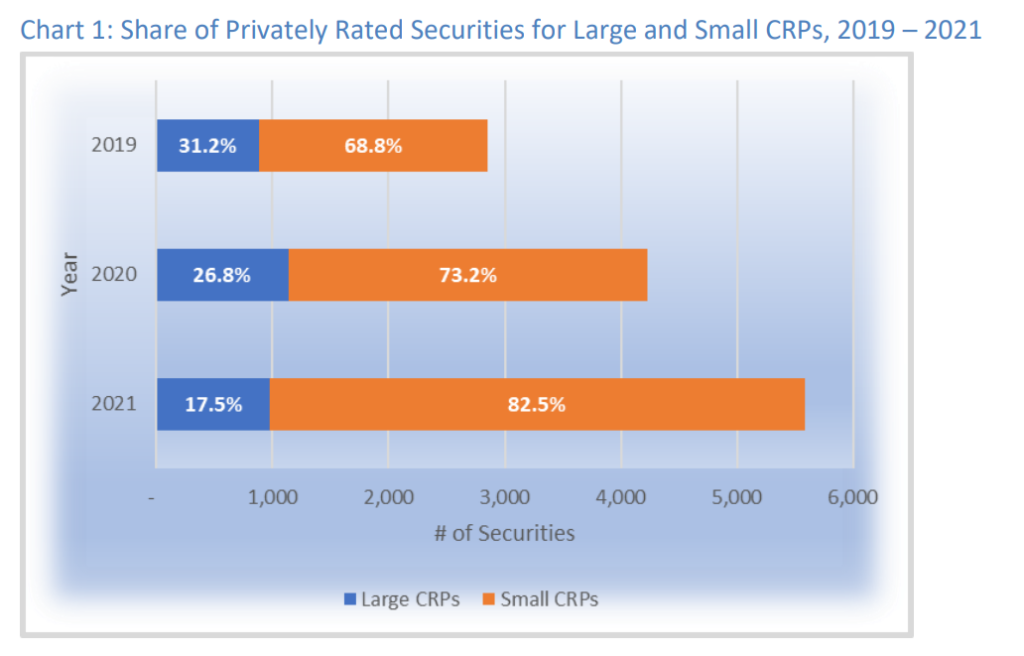Graphic:

Excerpt:
The number of privately rated securities reported by U.S. insurance companies totaled 5,580 at
year-end 2021, an increase from 4,231 in 2020 and 2,850 in 2019.
• Small credit rating providers (CRPs) to the NAIC, such as Egan-Jones, DBRS Morningstar, and the
Kroll Bond Rating Agency LLC (KBRA), produced a dominant share of the private letter ratings
(PLRs), accounting for almost 83% of U.S. insurers’ privately rated securities as of Dec. 31, 2021.
• Designations based on PLRs averaged 2.375 notches higher than designations assigned by the
NAIC Securities Valuation Office (SVO) according to data from 2019 through Q3 2021.
• Based on the credit rating analysis conducted by the SVO, the use of PLRs can result in lower
risk-based capital (RBC) charges and potentially lead to the undercapitalization of insurance
companies.
• Regulatory oversight of nationally recognized statistical rating organizations (NRSROs) does not
result in uniform ratings across the NAIC’s CRPs.
• Ten U.S. insurer groups accounted for 55% of the industry’s exposure to privately rated
securities at year-end 2020.
• No significant issuer concentrations of privately rated securities were noted.
Author(s): Jennifer Johnson, Michele Wong, and Linda Phelps
Publication Date:21 Jan 2022
Publication Site: NAIC Capital Markets Special Bureau

